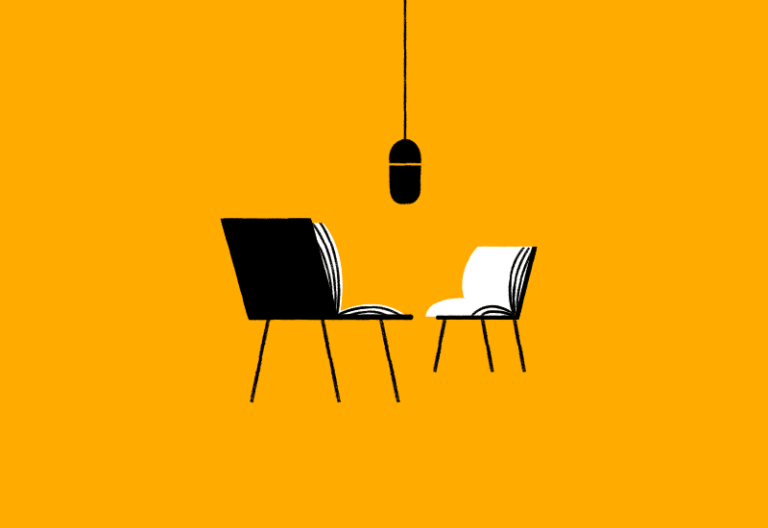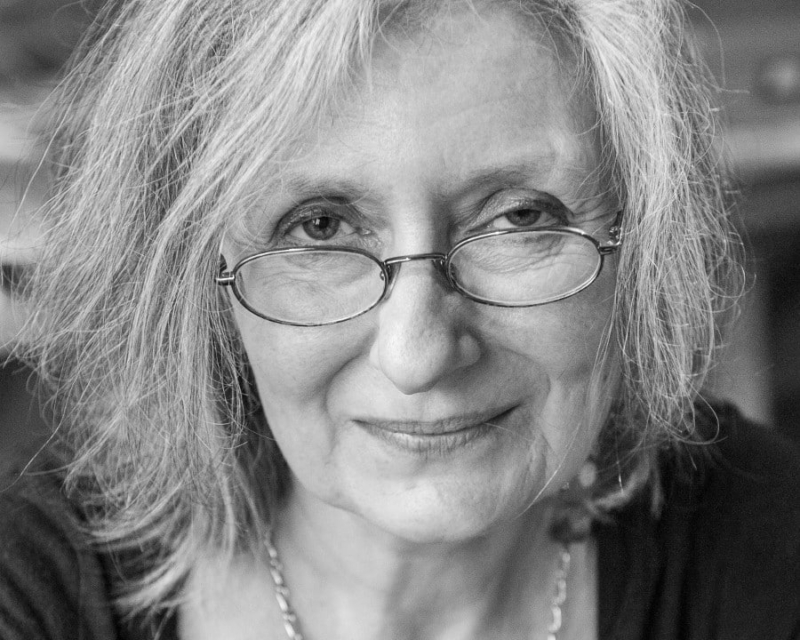- Collected
- Podcast
Writing Technique

- 18 April, 2024
- Simon Robson
- Adriana Hunter
- Anna Wilson
RLF Fellows Adriana Hunter, Simon Robson, and Anna Wilson explore technical challenges they have overcome in their work, such as learning to hear distinct voices in translation, the liberating power of repetition, and dealing with writer’s block.
Episode 457
RLF introduction: Hello, and welcome to Writers Aloud, the podcast about writing from the Royal Literary Fund.
It’s common to hear the word ‘technique’ used in connection with writing, but what does that really mean? Can writing be taught like any other skill? Is it a trade you might need to qualify to practice?How do you hammer words together and smooth away knotty grammatical issues to make handsome, functional or beautiful poetry and prose? In this episode, three Royal Literary Fund writers share their take on technique. First up, award-winning translator Adriana Hunter reveals some of the insights she has gleaned bringing more than sixty books into English from French.
Adriana Hunter: ‘Hearing Voices.’
When I teach translation there’s an exercise I like to set my students. It’s a short dialogue between a man called Robert and a woman called Emilie who are arranging a party for someone called Florence. I divide my students into two groups and ask both groups to translate the same piece. There’s one line in the dialogue that goes: ‘Oh mon dieu, non, ce serait vraiment terrible pour Florence.’
Which translates roughly as: ‘Oh my god, no, that would be really terrible for Florence.’
But one group usually translates it as something along the lines of: ‘Oh, good heavens, no, that would be perfectly frightful for Florence.’
While the other comes up with something like: ‘OMG, no, that would like totally suck for Florence.’
This is because I give the groups different information on the context of the dialogue. Group One is told that they’re working for a British publisher, and Robert and Emilie are a retired Major General and his wife arranging his sister’s 80th-birthday party. Group Two is told that they’reworking for a US publisher, Robert and Emilie are both eighteen and they’re arranging his little sister’s sixteenth birthday party.
Context, then, is a key element to finding and establishing voice in translation. I always think of translation as being a perfect balance between science and art — it requires all the precision of a science to remain faithful to the letter of the source text, but all the creativity of an art to remain faithful to its spirit. You could say that context is the science part of finding voice — it’s incontrovertible: Different people say things differently. In the example with the dialogue, my students are being steered not only by the characters’ age but also by the context of the target language – the language into which they are translating.
Of course, context in the source language is even more important. The more translators know about what frames a sentence, the easier it is for us to give the correct interpretations of words and voice. Let’s take the French verb ‘impressionner’, which can very often be translated as ‘to impress’ but can also mean to stun, stagger or overwhelm. You can be ‘impressionné / impressed’ by Emma Radacanu’s performance in the 2021 US Open. But someone squeamish emerging from a Tarantino movie saying they were ‘impressionné’ may not be commenting on the director’s cinematographic achievements, they might be saying they were shaken or distressed — you’d need to know more about the person to be sure. So the voice emerges during the course of a translation as we become more familiar with the context.
But, to get back to that Robert and Emilie dialogue, it takes more than context to come up with such radically different versions. The only instruction I give students with this exercise is to try to hear the voice. It’s significant that I’m asking them to do something passive — we can choose to listen to something, but we can’t control our hearing. I’m hoping my students will be open to signals in the text and receptive to the way they ‘hear’ a particular voice. If context is the science behind establishing voice, this receptive ear is the art. The techniques can be learnt but some people have an innate ability — they have an ear for voice as others have an ear for music.
People with this ear for voice can hear appropriate turns of phrase in their heads; they feel they understand a character and could tell you what Robert ate for breakfast and how Emilie wears her hair.
If that sounds like a method actor preparing for a role — well, there is a connection with acting. Translating dialogue is a sort of performance, and I believe many translators have an actorly ability for mimicry. One batch of students working on the American version of the Robert/Emilie dialogue quickly dismissed ‘Oh my god’ in favour of ‘OMG’ and ‘that would be really terrible for Florence’ in favour of ‘that would really suck for Florence’. A student with a good ear said, ‘no no no, it should be “totally suck” instead of “really suck’’’, and this helped another student make the perfect addition of ‘like’: ‘that would, like, totally suck for Florence.’
It could be argued that this isn’t acting, it’s just writing. Of course all writers need an ear for voice, vocabulary and syntax; and translators are writers.
So, yes, the qualities I’m describing are writerly but there’s a difference: a writer is working ab initio, he or she creates a book’s narrative voice, its characters and dialogue, whereas the translator works with existing material like an actor with a script. However impartially we believe we’re rendering the material, translators can’t help giving an interpretation of the source text. This is true of all readers — when any of us reads a book we inevitably interpret the text through the prism of our own sensibilities and preconceptions. And here’s an illustration of that:
One book that I translated had a voice that I identified incredibly strongly on my first reading. The book was Véronique Olmi’s Beside the Sea, a bleakly beautiful account of a struggling single mother taking her two sons to the seaside. The entire book is narrated in the first person, and the mother’s exhaustion and despair leak off the page. I could smell her flat and I could picture the woman herself — lumbering, with plain features and lank hair. The overriding impression I caught from her voice and wanted to convey in English was weariness verging on resignation.
My translation of this book was later adapted into a monologue by the actress, director and writer Lisa Dwan. It was a memorable, powerful performance and was so true to the book…but it wasn’t the same person I’d seen at all. Lisa is petite, agile, and very pretty, with glossy hair and sparkling eyes; and there was a bug-eyed intensity, almost a hysteria to her performance that was completely at odds with the lethargy I had felt. Both renditions were right — Lisa and I had each interpreted the narrator in our own way.
This notion of interpretation bolsters an important point about translation: there’s very, very rarely only one possible way to translate something — not only because of the boundless variety of linguistic options, but also because of these variations in interpretation. Surely, then, if translators are the mouthpiece for a book, if we are the single channel through which it reaches thousands of new readers, we have a huge responsibility to be absolutely true to the original author’s intentions and to the voices they heard in their head?
Well, possibly; but possibly not. And the anecdote about Lisa Dwan’s performance of Beside the Sea rather proves the point: I put my spin on the book, my narrator was sluggish, lethargic and bewildered, and – even working from that raw material – Lisa put a completely different spin on the character. In other words, however slavishly I might have tried to be true to Véronique Olmi’s intentions, every reader will run with the book in their own personal way.
In fact, I believe translators shouldn’t make any self-conscious effort to dampen our natural responses to a text. Our interpretations are just as valid as anyone else’s, and attempts to bridle them might compromise our work or make the voice sound contrived. But translators need to be careful not to take this concept of acting and interpretation too far: our default setting should be respectful, receptive neutrality. We may be actors, but we’re character actors, not big stars; we disappear into the roles we play rather than defining them. In my job complete invisibility is the ultimate compliment — you know you’ve succeeded if people would never guess the book was a translation.
Of course, all this talk of acting applies very directly to dialogue in translation, but – as we’ve seen with Beside the Sea – it also relates to first-person narrative. What, then, of books with a disembodied, omniscient third-person narrator? Well, even these have a voice, and it isn’t the author’s voice, each book has a voice of its own.
The process of identifying this voice is similar but more subtle and, I find, slower than with dialogue or a first-person narrator. I like to compare it to learning to play a piece on the piano: I sit at a keyboard with my score (the source text) on a bookrest in front of me. At first, my fingers toil over the keys, only slowly producing a music of English-language words on the screen. By the end of the book, my hands will be gliding fluently over the keys — I will have become attuned to the voice of the book, to its own particular music.
But some books have more than one narrator or, even if they are narrated entirely by an omniscient third-person narrator, they can have more than one voice. Hervé Le Tellier’s genre-busting international bestseller The Anomaly is just such a book. It is immensely readable, unputdownable even, and yet it has a sophisticated narrative structure that follows a host of intertwined storylines. It also includes several transcripts: a fictional newspaper article, several fictional interviews, various letters and emails from characters, even the lyrics of a song. One brief captivating chapter is made up almost entirely of one character’s furious questions. And another chapter is third-person narrative but constitutes the increasingly hysterical ranting of a man who believes he is doing the will of his god.
The book’s playful intertextuality and metatextuality make it a compelling jigsaw puzzle of narrative devices and voices. Surprisingly, it didn’t take long to differentiate between, and adapt to, these different voices: given the precision and skill of the source material, it was all a question of receptivity. If I was open to the original text, I could code switch effortlessly between the different voices, like someone sitting at a piano and playing a score that dips in and out of, say, Chopin, Scott Joplin, Greig and Herbie Hancock.
One of the many devices used in The Anomaly is free indirect speech. This is a beguiling, almost sneaky technique where a person’s individual, subjective voice can be heard through the otherwise objective voice of a third-person narrator. It’s as if the character is hijacking the narrative voice as a spirit is believed to speak through a medium. Free indirect speech can pose particular challenges for the translator because we need to be sure that the individual’s voice is heard while maintaining the framework of third-person narrative.
Interestingly, some instances of free indirect speech from books I’ve translated flag up another important point about voice in translation: translators must be careful not to allow wokeness or political correctness to erode voice. In Angélique Villeneuve’s beautiful book Winter Flowers, one of the central characters has sustained catastrophic facial injuries in the First World War and his wife thinks bitterly about the men who didn’t go to war. They are described by the third-person narrator but clearly from her point of view as: ‘Les embusqués, les trop vieux, les tordus’ which I originally translated as: ‘The shirkers, the elderly and the malformed’.
My editors were squeamish about ‘malformed’ and suggested we should replace it with ‘disabled’, but that would have imposed twenty-first-century sensibilities on a character in 1918. The French word, ‘tordus’, literally means ‘twisted’ and I wanted to keep some of the scorn and aggression in that description, so I offered my editors a compromise with ‘misshapen’, which they accepted.
This anecdote from Winter Flowers highlights a problem that translators, like all writers, will face at some time: however well we use our toolkit of techniques to establish voice (the context, the ear, the receptivity and the acting), we still have to argue our case with editors and, more recently, sensitivity readers. The narrative voice of a book can to some extent be perceived as the voice of a publishing company… I do wonder how much more readily my editors would have accepted the word
‘malformed’ if it had been explicitly spoken by the wife in dialogue, rather than smuggled into the narrative as free indirect speech. But that is a whole other conversation.
RLF: That was Adriana Hunter. While translating may present considerable challenges, practitioners can usually rely on the skeleton of the original text to help them create their book. Writing from scratch is another matter.
With that in mind, playwright and fiction writer Simon Robson shares some of the secrets of his creative process.
Simon Robson: Before I was a writer, I trained as an actor.
There’s an awful moment in rehearsing any play when, on the third or fourth day, you get up from the rehearsal table littered with coffee cups and ever-so-helpful research material on the background to the drama, and with your script in hand you ‘put it on its feet’ for the first time. It’s agony. Your body doesn’t belong there; when it says your character goes and looks out of the window you follow the stage directions like a dodgy Satnav and you feel that anyone, trained or untrained, could give a more convincing rendition of your part than you. At the end of the day you go to the pub, drink too much and blame your drama teacher from school for encouraging you; you consider a late change of career.
The next day, hungover, you try again. This time you know you have to go and look out of the window, but your body seems to take you there automatically and you are able to half-articulate ‘why am I going to look out of the window?’ You remember that we are not only words and that actions are not merely punctuation. That a text is tyranny unless we free ourselves from it. You start to ask yourself lots more questions, but before you have chance to answer them they make you do the scene again. And again.
Endless repetition. Soon it has happened so many times you think it’s actually real. And this is good, because once it’s real you become free within it, because there’s no observable artifice. Each time I repeat the scene I take more for granted and the more secure my place within it. The more embedded, the freer I am — the performer’s paradox. Now selfconsciousness and doubt begin to dissolve. Now, when I go to look out of the window I see not the brick wall of the rehearsal room but my life. My character’s life; which now happens also to be mine.
After the agony and exposure of that first day, what began as awful fiction becomes, for us, fact; and that fact is then ready for someone else to witness as fiction, and if we do well, the audience will, like us, believe it is real.
So that’s how I write. It involves a lot of reworking, but each time I try a new draft, the repetition involves me in the rehearsal of something that has happened so many times it must be true. And if it is true, I can get closer to what it means. The nightmare of that first day on your feet, or a first draft, is that it is make-believe. Make-believe is the necessary evil — making it true is the real business.
And if all goes well, the reward is freedom. Repetition establishes structure and structure suggests – or provokes – the desire to be free — free in the moment on stage, free to grant your characters autonomy.
Best feeling in the world.
RLF: Simon Robson there. Getting the words onto the page may be tricky at times, but what happens when the ideas simply won’t come? In the last of this episode’s talks, prolific children’s author and writer of nonfiction Anna Wilson confronts writer’s block.
Anna Wilson: I don’t believe in writer’s block. This is because my career began with commissions for series fiction that had to be written so fast, I didn’t have the luxury of staring out of the window for too long. That’s not to say I don’t find writing hard. Of course there are days when the ideas won’t gel or when I grit my teeth, forcing words out which I will then only delete minutes later. But this isn’t writer’s block: it’s not the end, it’s part of the process, something my husband is always keen to point out as he watches me pacing, looking cross and complaining. ‘Here we go again,’ he says. ‘You’re in that phase.’
I’ve had to learn strategies to deal with ‘that phase’, otherwise I’d never finish anything. Even an article as short as this can have me going around in circles, unsure I have enough – or indeed anything – worth saying.
Invariably, the cure is to get outside. I’ll either walk or run myself through a problem, recording my thoughts in a breathy voice note. Or I’ll simply let the movement of my body take over so that my brain shuts up. Coldwater swimming is particularly good for this — while I’m swimming, I can think of nothing but surviving the cold. My writer’s brain gets a factory re-set, meaning I’m fresh and ready to write again once I’m home and dry.
Going for a walk with someone else can do the trick: people have a habit of opening up while they move, the lack of eye contact paving the way for a deeper level of intimacy. Often such a conversation will be the lever that starts the writing cogs whirring again. Once when I was struggling with a plot, I gave myself the day off and went walking with my oldest friend. She had been through a terrible time as her house had recently burned down. As she told me about it, my grasping writer’s brain sensed the ending of my story coming together. I felt so guilty about ‘writing’ while listening to her that I had to call her once I was home and ask permission to use her life to complete my book. Luckily, she said yes!
Sometimes it’s sheer trickery that unlocks things. I tell my brain that it’s not real writing if it’s in a notebook or on a plain sheet of paper: it’s just free-writing or mind-mapping. Sometimes I write my characters a letter: ‘Dear Bob, Why aren’t you speaking to me today?’ It’s amazing what Bob will say if I let him out of the laptop for a while.
Other days I’ll just get the coloured sticky notes out. There’s nothing like plotting your novel on the wall, evidence-room style, for showing your brain where the plot holes are. These are all ideas I’ve handed on to students who come to me saying, ‘I’ve got writer’s block’. ‘No, you haven’t,’ I say. ‘You’re just in that phase… Let me show you some tricks.’
RLF outro: That was Anna Wilson. If you’d like to know more about any of our featured writers, you can find them on the Royal Literary Fund website. This episode was produced by Ann Morgan. Coming up next time, James Attlee talks about being an outsider, Lesley Glaister moves between genres, Ruth Dugdall tackles loneliness and Mark Blacklock faces rejection. We hope you’ll join us.
Download PDF TranscriptYou might also like:
Writers as Outsiders
RLF Fellows James Attlee, Lesley Glaister, Ruth Dugdall, and Mark Blacklock examine the idea of not fitting in, whether that…
Elizabeth Cook in conversation
Elizabeth Cook speaks with Ann Morgan about the experience of seeing your words set in music, the physical craft of…
The Influence of the Past
Royal Literary Fund Fellows Sarah Hilary, Peter Fiennes and Claire Williamson explore the influence of past experiences on their work,…


